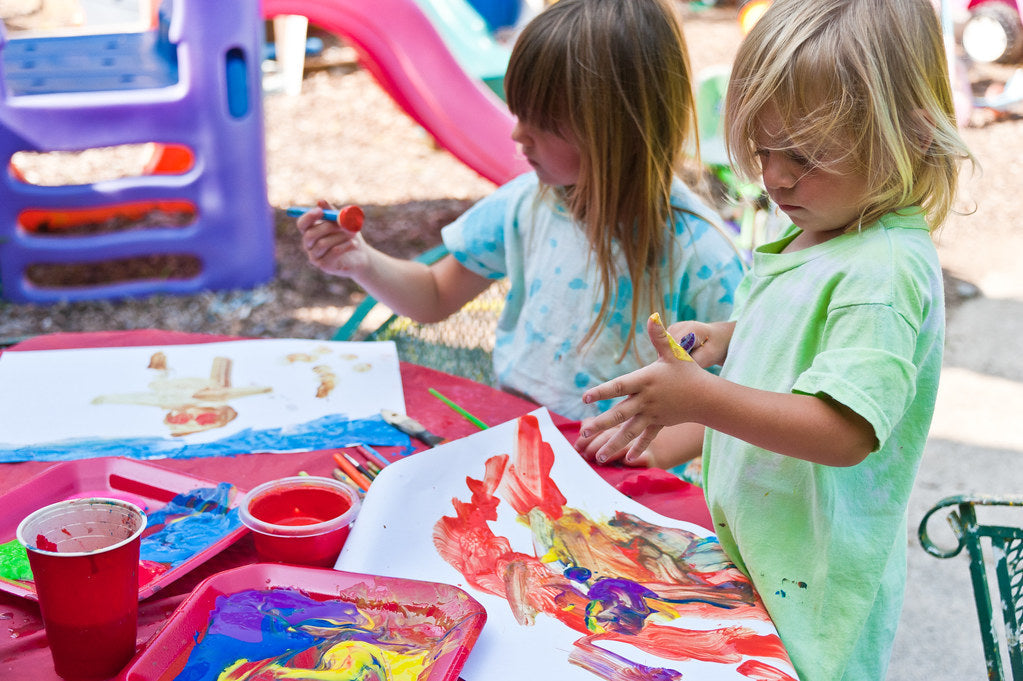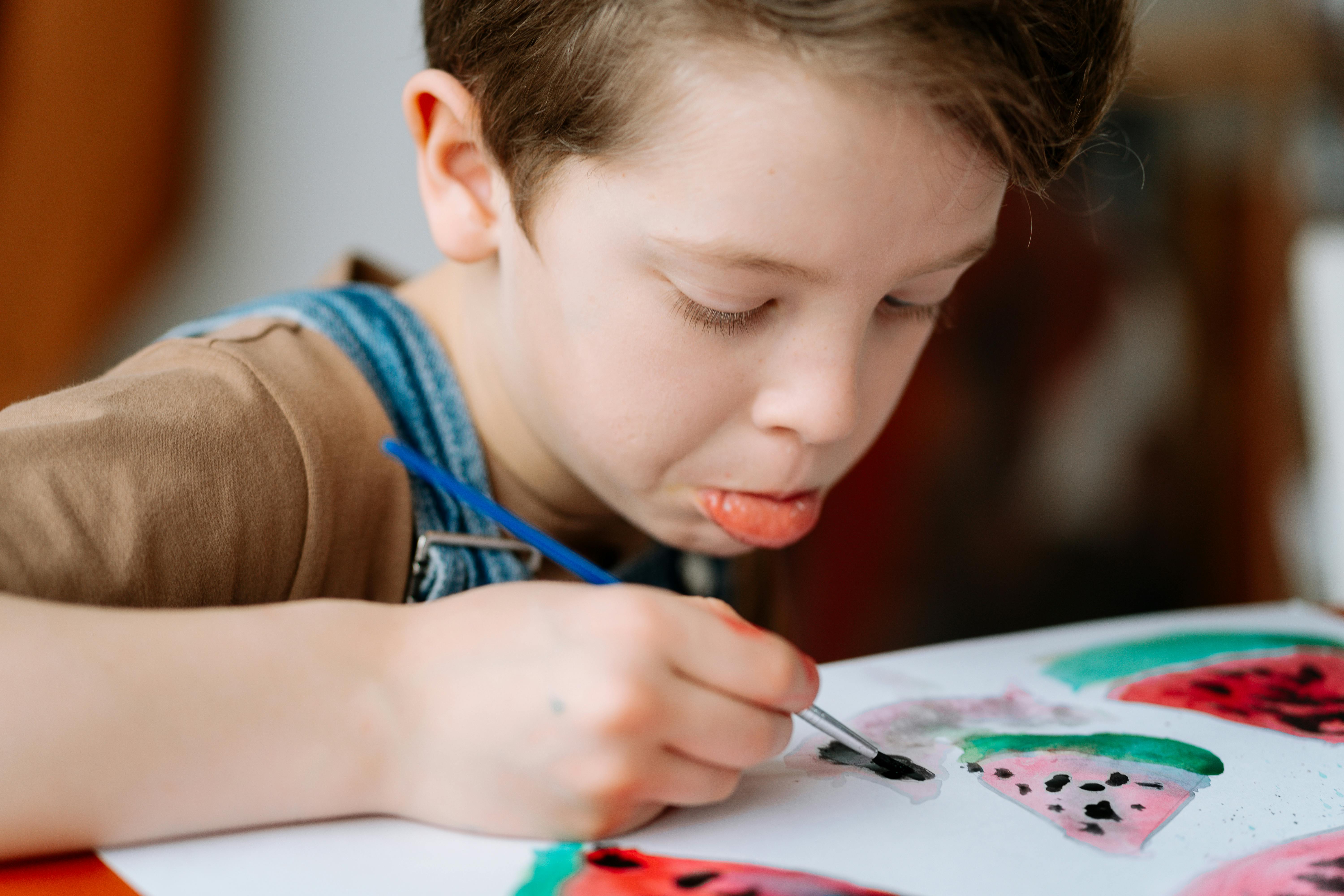
Art, Perfectionism, & Your Child
June 11, 2020
By Beth Herrild
One of the questions I am frequently asked by parents is “How can I help my perfectionist child enjoy art? He is constantly tearing up his paper because he thinks it’s no good!” As a parent, you probably already know that perfectionism is not the path to high achievement and happiness. It is actually quite the opposite. “While high achievers are motivated by the pleasure of doing their best and aren’t too bothered by setbacks, a perfectionist is motivated by a fear of failure and the desire to gain acceptance”, says Michele Kambolis, author of Generation Stressed: Play-Based Tools to Help Your Child Overcome Anxiety.
Perfectionists typically have unrealistically high expectations for themselves; when they do not meet them, it can lead to frustration, low self-esteem, anxiety, and depression. It also just sucks the joy out of most activities! Perfectionists may avoid trying new things that they fear they won’t be good at. Many perfectionists procrastinate on starting new projects or assignments and quit if it isn’t going well because they are afraid they will fail.
So, when it comes to art, what can you, as a parent do to help? Here are some useful tips:
• Be mindful of your own self-talk and what you’re modeling. Cathy Smith, a psychologist and counselor who works with children and adults, says “For your child to see you making mistakes, not being highly self-critical, and using good coping skills, is worth its weight in gold.” If you are telling your child that it’s okay to make mistakes but then she hears you berating yourself for a mistake you made, your actions will speak louder than words.
• Focus on the process rather than the end product. One of the underlying principles of Outside the Box Creation is that art should be all about enjoying and learning from the process. If you get a pretty product in the end, it’s icing on the cake! Focus on the fun. Try to engage as many senses as possible: touch, smell, hearing (music). You might try using hands instead of brushes, to paint, or working with clay, to give your child a more visceral connection to the process. For more information on this, see my blog post on process vs product. Also, it is in the experience of creating art that our kids’ brains get all the wonderful cognitive benefits that art has to offer.
• Challenge destructive thinking and self-talk. You can do that by saying things like “I’m really having fun!” or “This didn’t turn out quite like I thought it would; maybe I’ll try something different.” Foster a growth mindset by saying things like, “I’ve never done a project like this before, but I’m going to try it!” or “I’m not very good at drawing yet, but if I keep trying I can learn.” It’s like in that Macklemore song, Ten Thousand Hours, “The greats weren’t great because at birth they could paint. The greats were great ’cause they paint a lot.” (FYI, the song has a great message but also contains some profanity.)
• Help your child break down projects into much smaller steps. Doing this helps him learn how to tackle all sorts of large projects, one step at a time, at the same time taking the focus off of the end product.
• Do art exercises and games rather than a full project. You might get out some pastels and try a bunch of different techniques all over the paper, being clear that it isn’t intended to be a completed piece of art. Go outside and create a big round nature mandala using leaves, rocks and other natural materials or draw in the dirt. Tape paper underneath your coffee table and lay on your backs to draw on the paper, pretending you are Michelangelo in the Sistine Chapel (although now the experts say he didn’t actually lie down to paint it!) Or, create a piece of artwork together collaboratively. Each of you starts with a piece of paper on which you draw or paint a little bit. Then you switch papers and work on that one a little and then switch back. Keep going as long as you can. So in the end, both pieces are collaborative. This can help your child feel less attached to the final outcome, although this can also be really difficult for some kids.

• Emphasize experimentation and taking risks in art! Use paper and other substrates that aren’t very expensive so it doesn’t feel like a big deal for your child to discard a few and start over. Make the stakes very low. I’m not advocating total randomness. After your child experiments, then you can circle back and talk about the pieces that he really enjoyed and discuss why he enjoyed them and what tactics or techniques he would like to use again.
• Help with problem solving. Improvement in creative problem-solving skills is one of the benefits that art offers. While it is often helpful to show photos of examples to your child when you are starting a project, be careful not to imply that the examples are the right way to do the project. One of the important things that art teaches us is that there is always more than one right answer! If your child is stuck on a piece of art saying “I don’t know what to do next,” or “I ruined it,” brainstorm several different things she can do. Many painters will find one area of a painting that they like and then cut it out and use it in another piece of artwork. There is an adage among artists that you have to do a lot of bad paintings to get to the one good one.
• Read books with your child about people who made mistakes and learned and grew from them. Biographies are great to show kids how many famous people had to work hard and try many times before succeeding at their goals. Did you know that Dr. Seuss’ first book, And to Think That I Saw It on Mulberry Street, was rejected 27 times before being published? Walt Disney was fired from one of his first animation jobs with the Kansa City Star because they thought he lacked imagination and had no good ideas! Some other books we love are Beautiful Oops! , Mistakes That Worked, and The Dot.
• Learn how to talk with your child about his art. Instead of asking “What is it?” Say, “Tell me about your art!” If you ask a perfectionist child, “What is it?” He will automatically assume that it isn’t very good, or you would have known what it was. He will also get the message that whatever art he does, it had better be identifiable. Instead of praising how pretty it is or how much you like it, try saying “I love how diligently you worked on that!” or “Using those two colors together is a really interesting choice! Can you tell me why you chose that?” For more depth on talking with your child about her art, read my blog post on the subject here.
Many experts believe that perfectionism is a combination of inborn personality tendencies and environmental factors. Our society does not generally praise people who try new things and don’t do well. If you are homeschooling your child by choice, you may have pulled her from school because of overly critical or demanding teachers. Setting high goals is good, but praise should be focused on perseverance, learning, creative problem solving, and improvement rather than just achievements. Creating art with your perfectionist child is difficult, but well worth the effort. Some children who continue to struggle with perfectionism may benefit from seeing a therapist, but many of you can help your perfectionist child enjoy art more and more each time you try using some of these tried and true techniques.

